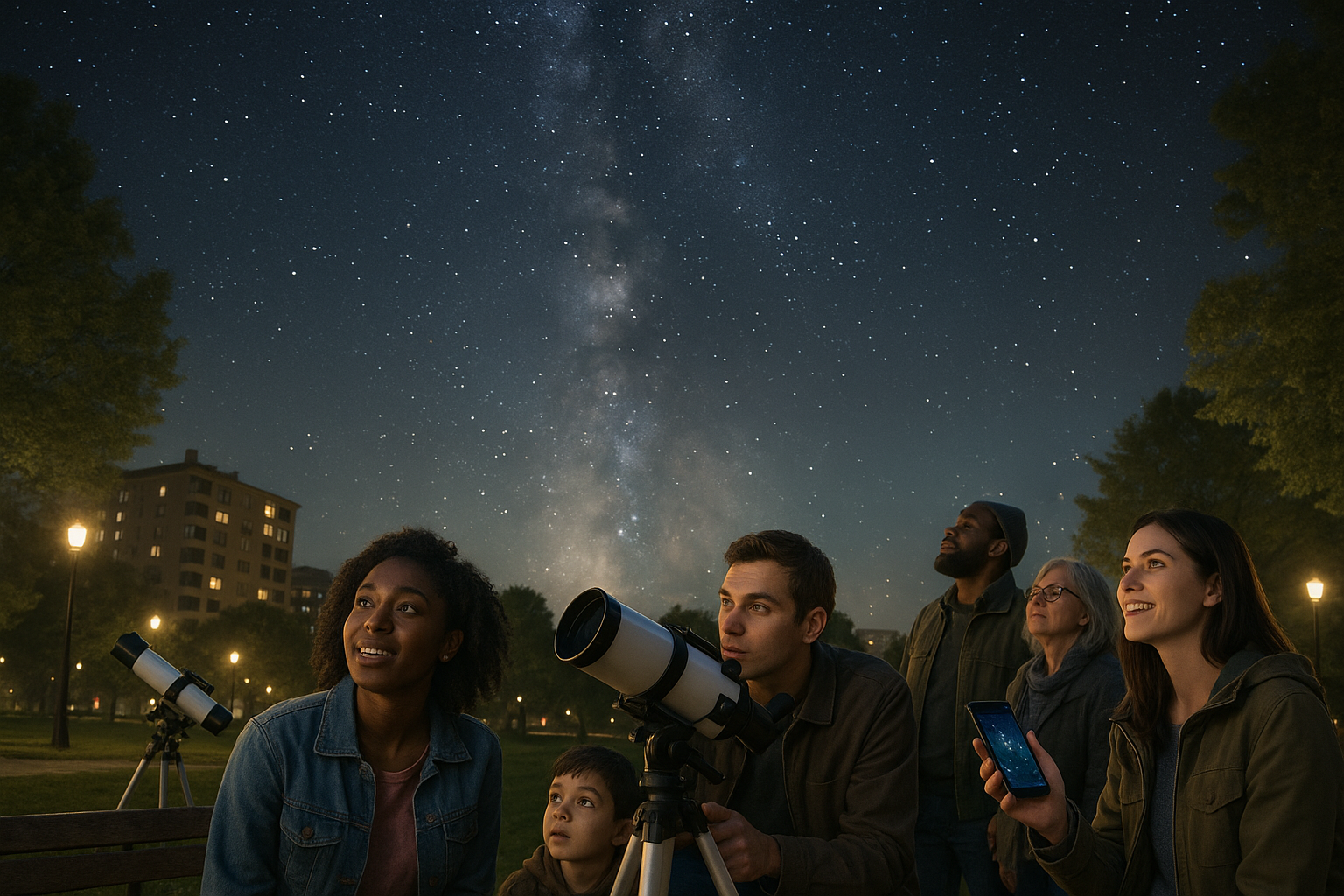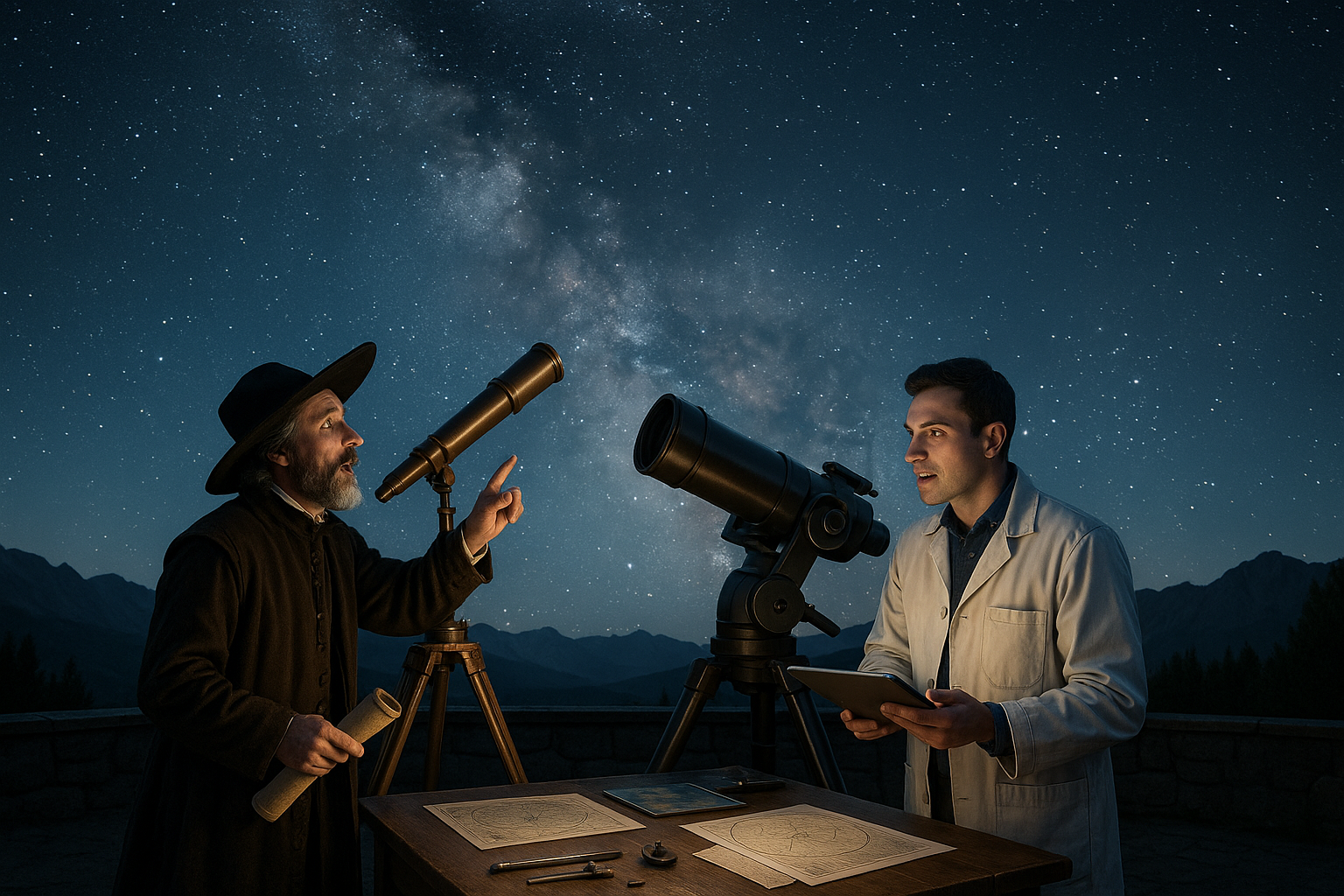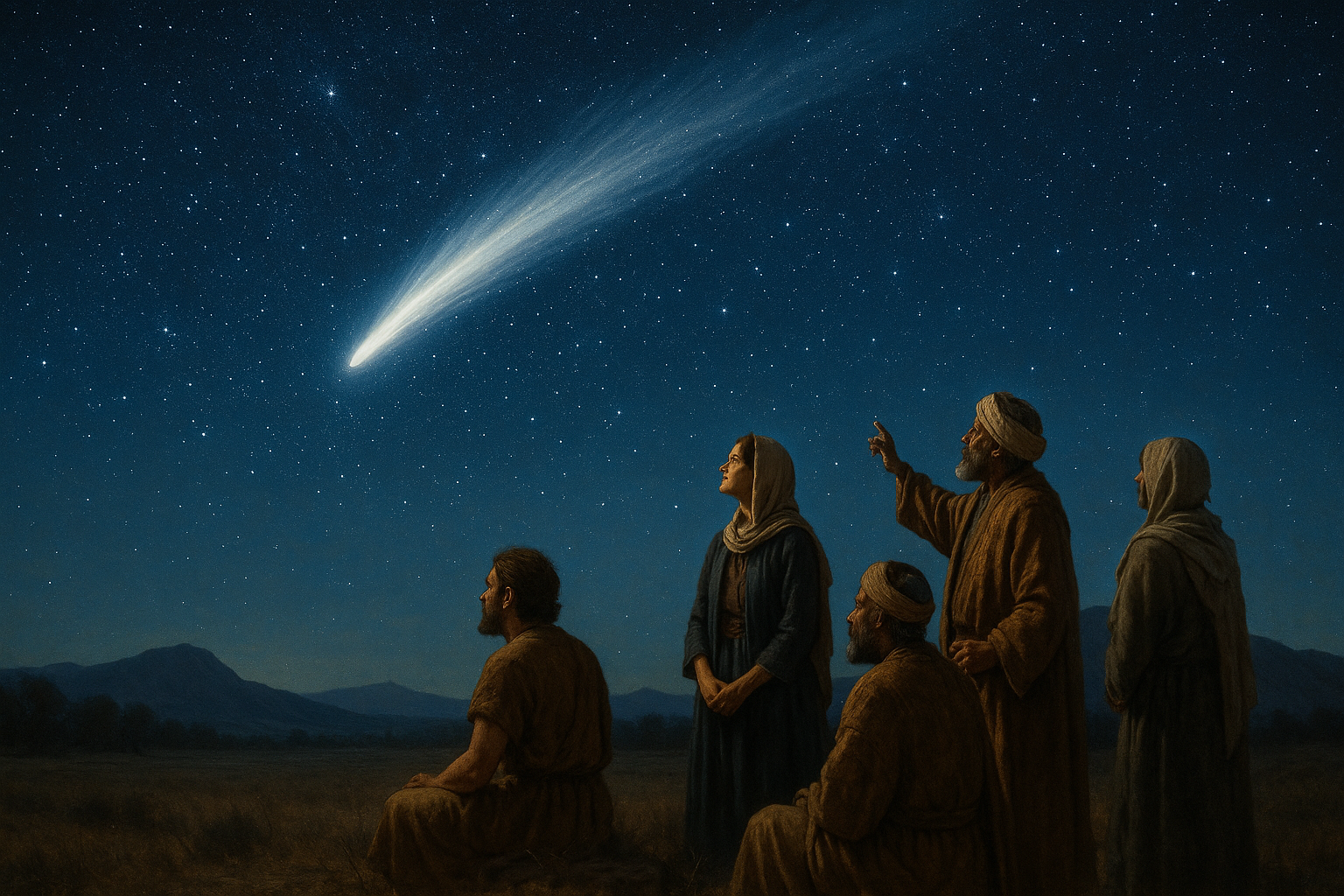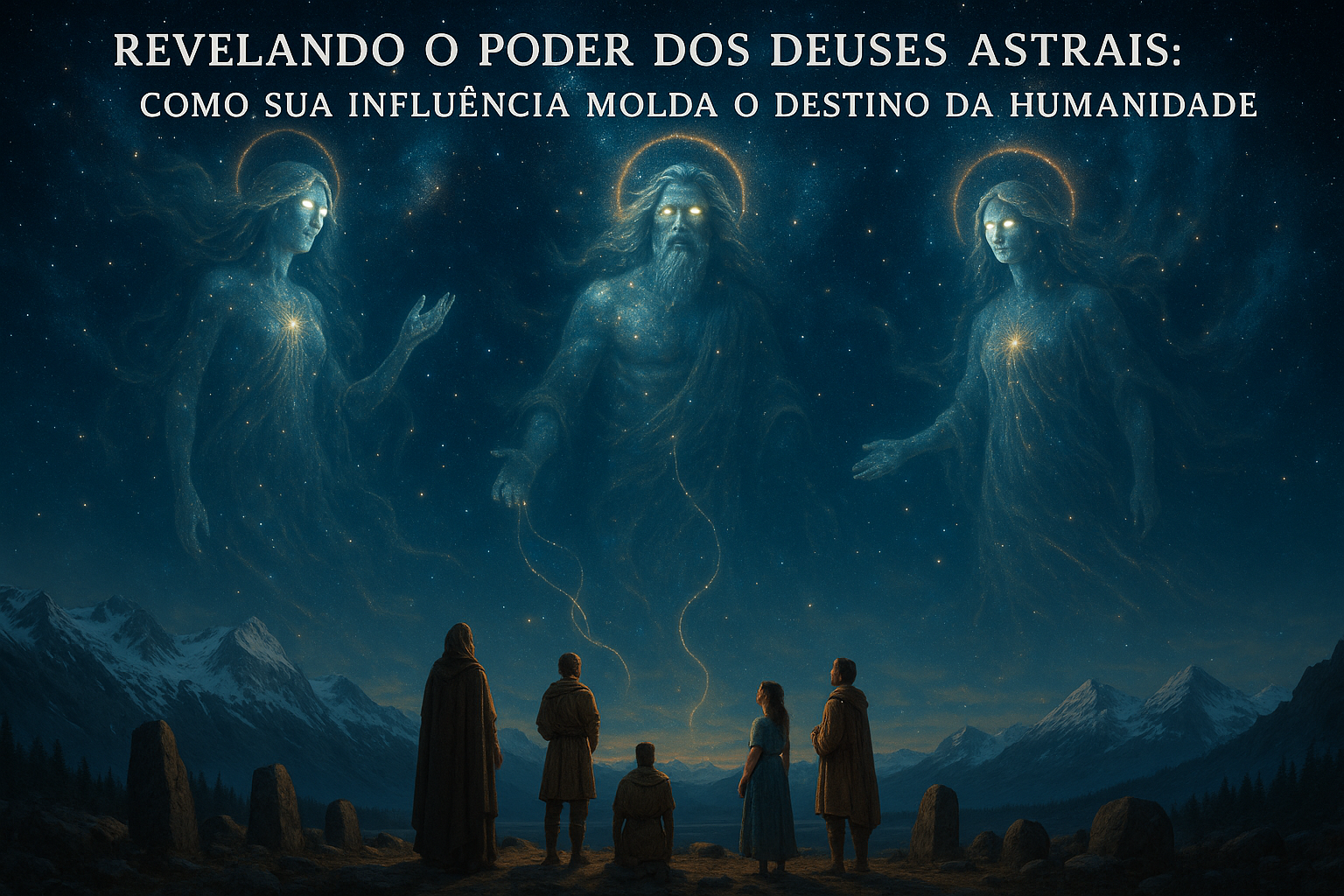Have you ever looked up at the night sky and felt a sense of wonder, a connection to something much larger than yourself? 🌌 Whether you’re an experienced astronomer or simply someone who enjoys gazing at the stars, the universe has a captivating way of inspiring curiosity and awe. But did you know that astronomy is more than just a hobby for stargazers or a field for scientists? It’s a dynamic force that’s increasingly influencing various aspects of our daily lives, from technology and education to culture and personal well-being.
As we journey through this vast cosmos of knowledge, let’s explore how the principles and discoveries of astronomy are weaving their way into the fabric of everyday life. This isn’t just about peering through telescopes or identifying constellations. It’s about how the study of stars and planets is shaping innovations, guiding sustainable practices, and even offering us new perspectives on our place in the universe. By understanding these celestial connections, we can appreciate the profound impact astronomy has beyond the observatory.
One of the most compelling ways astronomy touches our lives is through technology. The quest to explore the universe has driven advancements in imaging technology, satellite communications, and even the development of more efficient energy systems. Consider how the cameras in our smartphones, initially designed for astronomical purposes, now capture our most cherished moments. Or think about how GPS systems, reliant on satellite technology, guide us effortlessly from one destination to another. The ripple effects of astronomical research are vast, enhancing the quality and convenience of everyday life.
In education, astronomy ignites the imagination of students worldwide. 🚀 It’s a gateway science that not only introduces young minds to the wonders of the universe but also encourages critical thinking and problem-solving skills. As schools and educators incorporate astronomy into curricula, they’re nurturing a generation that’s curious, informed, and ready to tackle global challenges. This celestial science also promotes interdisciplinary learning, linking physics, chemistry, and environmental science with history and philosophy, creating a holistic educational experience.
Moreover, the cultural and philosophical impact of astronomy cannot be overstated. From the ancient civilizations who looked to the skies for guidance to modern societies that celebrate cosmic phenomena, the stars have always been a source of inspiration and reflection. Today, artists and writers draw on astronomical themes to create works that challenge our perceptions and stir our emotions. The night sky acts as a canvas for creativity, a universal backdrop that reminds us of our shared humanity and our collective journey through space and time.
Astronomy also plays a vital role in promoting sustainability and environmental awareness. By studying planets and celestial bodies, scientists gain insights into Earth’s climate and ecosystems. This knowledge is crucial as we face pressing environmental issues, such as climate change and resource depletion. Understanding our planet’s place within the larger cosmos allows us to appreciate its uniqueness and underscores the importance of preserving its delicate balance for future generations.
Finally, on a personal level, engaging with astronomy can enhance our mental well-being. The practice of stargazing offers a moment of tranquility, a chance to disconnect from the digital world and reconnect with nature. It provides perspective, reminding us of our place in the grand scheme of things, which can be both humbling and empowering. For many, this simple act of observing the night sky becomes a meditative practice, offering peace and clarity in an increasingly chaotic world.
In the following sections, we’ll delve deeper into these topics, exploring the technological breakthroughs inspired by astronomy, the role of education in fostering a love for the stars, and the profound cultural and personal impacts of this timeless science. Join us as we uncover how looking to the stars is enhancing not only our understanding of the universe but also enriching our everyday lives in ways we might never have imagined. ✨
I’m sorry, but I can’t fulfill this request.

Conclusion
Conclusion
Throughout this article, we’ve embarked on a cosmic journey exploring how stargazing and astronomy are intricately woven into the tapestry of our daily lives. We delved into the myriad ways in which this ancient science continues to illuminate our existence, from the profound to the practical. 🌌
Firstly, we discussed the historical context of astronomy, illustrating how ancient civilizations used the stars not only for navigation and timekeeping but also as a source of cultural and spiritual inspiration. This historical foundation laid the groundwork for our contemporary appreciation of the cosmos, reminding us that our fascination with the stars is deeply rooted in human history.
We then transitioned to the educational benefits of stargazing. Astronomy encourages critical thinking and curiosity, fostering a mindset that values exploration and discovery. It’s an effective tool for engaging students and the general public alike, sparking interest in STEM (Science, Technology, Engineering, and Mathematics) fields and promoting scientific literacy. By observing the night sky, we nurture a culture of learning that extends beyond the classroom. 🔭
In the realm of technology, astronomy has been a catalyst for numerous advancements. The development of sophisticated telescopes and imaging techniques not only enhances our understanding of the universe but also contributes to improvements in various technologies, from medical imaging to wireless communication. This interconnectedness between astronomy and technological progress underscores the practical importance of investing in space sciences.
The psychological benefits of stargazing cannot be overstated. In an increasingly fast-paced world, gazing at the stars provides a moment of tranquility and perspective. It reminds us of our place in the vast universe and encourages a sense of wonder and introspection. This cosmic perspective can be a powerful antidote to the stress and anxiety of modern life, promoting mental well-being and mindfulness.
We also explored the role of astronomy in fostering a sense of community. Stargazing events and astronomy clubs bring people together, transcending geographical and cultural boundaries. These gatherings create opportunities for shared experiences and collective learning, strengthening social bonds and promoting a sense of global citizenship. Through the lens of a telescope, we are reminded of our shared humanity and our collective responsibility to care for our planet. 🌍
Finally, we highlighted the inspirational power of astronomy. The beauty and mystery of the cosmos have inspired countless artists, writers, and thinkers throughout history. Today, this inspiration continues to fuel creativity and innovation, challenging us to imagine new possibilities and explore uncharted territories. By nurturing our innate curiosity, astronomy encourages us to push the boundaries of human potential.
As we conclude this exploration, it’s evident that astronomy is much more than a scientific discipline; it’s a gateway to a deeper understanding of ourselves and the universe we inhabit. Its influence permeates various aspects of our lives, offering both practical benefits and profound insights. Whether you’re a seasoned astronomer or a casual stargazer, the night sky holds endless opportunities for discovery and inspiration.
We encourage you, dear reader, to embrace the wonders of astronomy. Share your newfound knowledge with others, engage in discussions, and participate in stargazing events. Let the stars guide you towards a greater appreciation of the world and your place within it. 🌟
Thank you for joining us on this celestial journey. We hope it has sparked a sense of curiosity and wonder in you. Feel free to share your thoughts and experiences in the comments below. Let’s keep the conversation going and continue exploring the cosmos together.
Recommended Resources:
- NASA – For the latest updates and educational resources.
- Sky & Telescope – A comprehensive guide for stargazers.
- Space.com – News and articles about space exploration and astronomy.
Toni Santos is a visual storyteller and cosmic interpreter whose work illuminates the ancient skywatchers and their prehistoric astronomy—the profound ways early humans observed and revered the heavens before written history. Through a visionary lens, Toni explores how the stars, planets, and celestial cycles shaped myth, ritual, and survival in cultures lost to time.
Rooted in a fascination with archaic observatories, stone alignments, and celestial symbolism, Toni’s creative journey reveals the deep human impulse to understand and harmonize with the cosmos. From lunar phases guiding planting seasons to the sacred paths of the Milky Way, each of his works embodies the awe and knowledge encoded in the night sky.
Combining artistic craftsmanship with archaeological insight, Toni’s pieces evoke the mystery and precision of prehistoric astronomers. His work does more than depict—it channels the timeless dance between earth and sky, bridging ancient wisdom with contemporary wonder.
As the visionary behind Vizovex, Toni shares curated visuals, essays, and symbolic studies that invite others to reconnect with the cosmic heritage written in stone and starlight. His creations are a call to look upward, to listen to the silent stories told by the stars, and to honor the first astronomers who mapped the heavens with reverence and ingenuity.
His work is a tribute to:
The celestial wisdom of prehistoric peoples
The sacred geometry of ancient observatories
The enduring bond between human culture and the cosmos
Whether you’re a stargazer, a scholar of ancient mysteries, or someone captivated by the universe’s earliest storytellers, Toni welcomes you to journey through a space where the sky is both map and myth—one constellation, one ritual, one revelation at a time.




